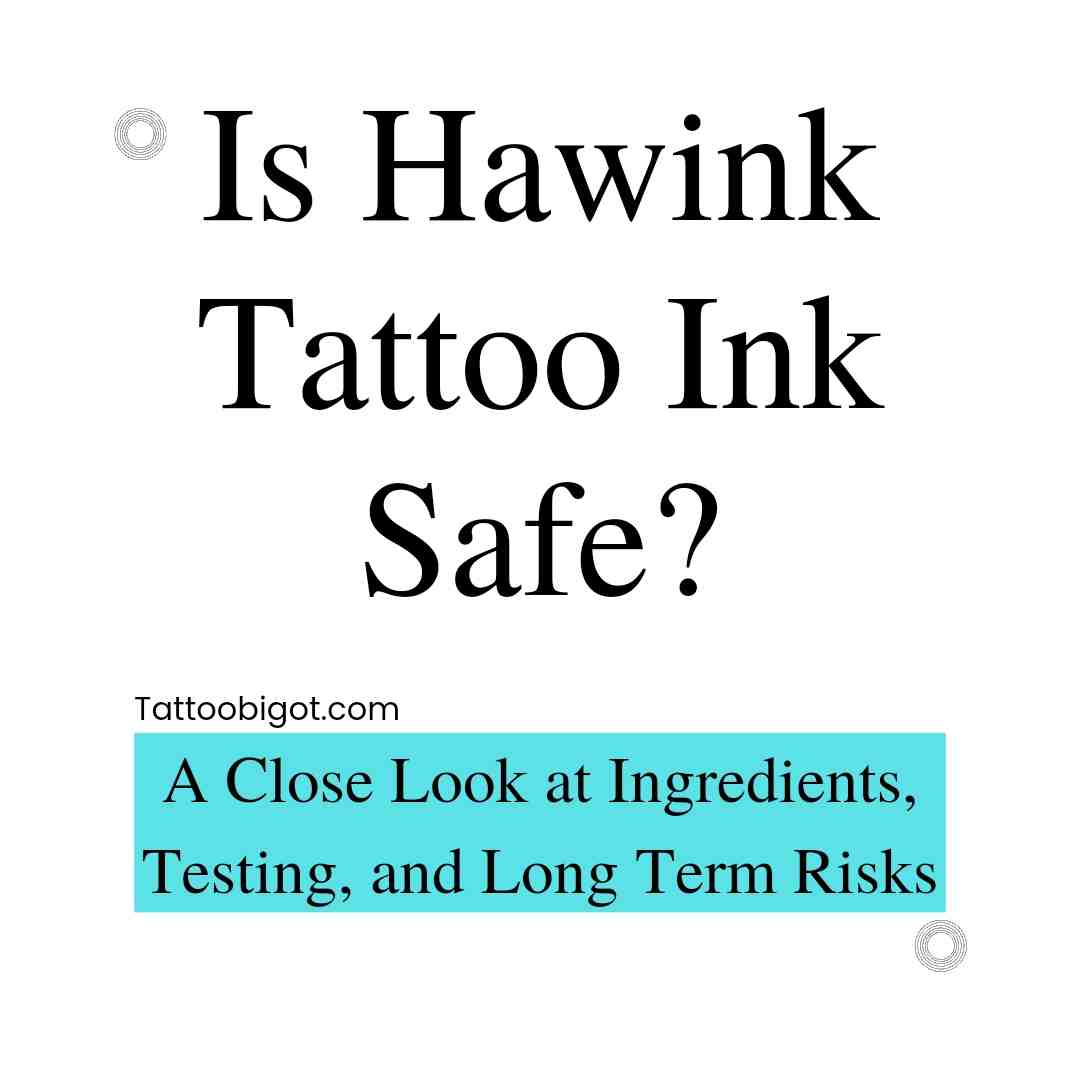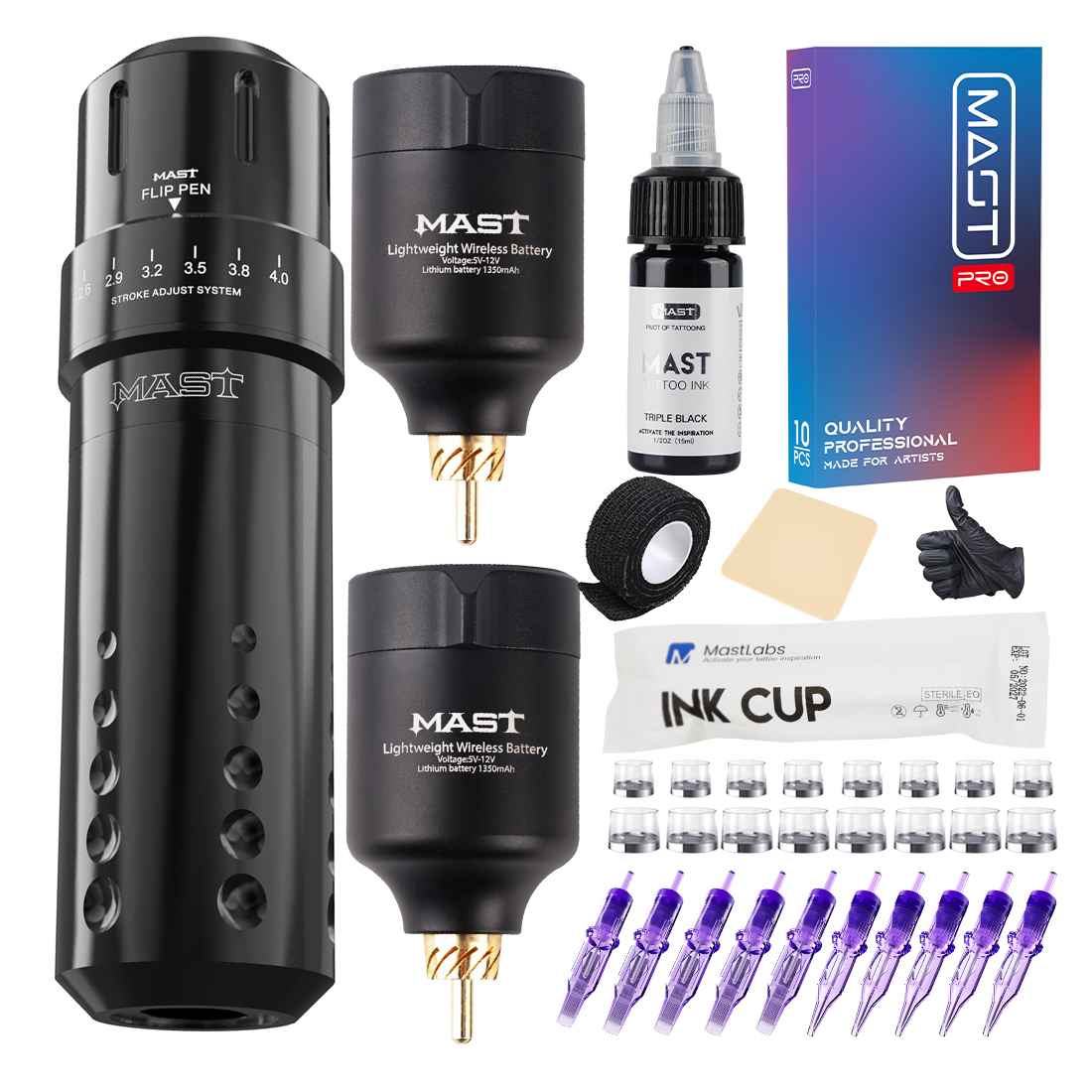Tattoo ink safety should be a top priority – these pigments will be permanently deposited into your skin. Low-quality inks can cause adverse reactions ranging from mild irritation to severe allergic responses.
So, when considering an expensive premium brand like Hawink, the critical question arises: is Hawink tattoo ink safe for skin?
In this comprehensive guide, we’ll analyze Hawink ink ingredients, production standards, toxicity testing, and potential long-term risks. Read on for a detailed look at the safety profile of one of the tattoo industry’s most trusted professional ink lines.
Overview of Hawink Tattoo Ink
Hawink is a pioneer tattoo ink brand founded in the Netherlands in 1986. They manufacture a wide range of vivid professional inks marketed to elite tattoo artists worldwide.
The company emphasizes pharmaceutical-grade pigments, high production standards, and rigorous safety testing. Their inks are free of many not-so-cool compounds found in cheap inks.
With vibrant colors, consistency, and an excellent reputation, Hawink appeals to top artists and collectors who view tattoos as an investment. But how safe are their inks truly, both short and long-term?
Also Read: Will Gabapentin Help With Tattoo Pain? A Shocking Revelation
Analysis of Hawink Tattoo Ink Ingredients
The specific components that make up tattoo ink greatly impact its safety profile. Let’s look closely at what goes into Hawink’s formulations:
Pigments – Hawink uses organic, high-purity pigments sourced from trusted suppliers. Colors are derived from CIita and EXT food colorants approved for cosmetic use.
Binders/vehicles – Proprietary synthetic resins help evenly disperse the pigment particles and adhere them within the skin. Specifics are not disclosed.
Solvents – Glycerol and other diluents allow proper viscosity and application of the ink into skin.
Preservatives – Hawink states their inks contain “minimum necessary” preservatives, likely parabens and/or phenoxyethanol in small amounts.
Contaminants – Inks are meticulously tested to ensure no heavy metals, microbes, or other impurities exceed strict limits.
How are Hawink Inks Produced and Sterilized?
Strict manufacturing practices are crucial for minimizing risks of contamination:
- Pigments are milled to micronized particle sizes optimized for tattooing. This enhances stability in the skin over time.
- Elevated temperatures, vacuum conditions, and multistage mixing ensure the homogeneity of each batch.
- Regular laboratory testing confirms ink viscosity, pH levels, and microbiology stay within specifications.
- Bottling uses a sterile closed system filling process to prevent contamination.
- Final products are immediately sealed and dated for expiration 3 years from manufacture.
Testing and Certification Supporting Hawink Tattoo Ink Safety
Hawink subjects their inks to rigorous third-party testing beyond what’s required by regulations:
– Biocompatibility testing – Cytotoxicity, sensitization, intradermal reactivity, and other biocompatibility studies confirm safe use in skin.
– Toxicology testing – Samples are analyzed for heavy metals, amines, hydrocarbons, and other potential contaminant limits.
– Microbiology testing – Finished inks must show no microbial growth and meet strict sterility requirements.
– Inspection audits – Manufacturing facilities follow ISO and Good Manufacturing Practice requirements.
– REACH Compliant – Adherence to REACH ensures restricted chemicals are below specified thresholds.
– FDA Audited Facility – Their U.S. production site maintains FDA registration and oversight.
Also Read: Is Dermasil Good for Tattoos? Analyzing Effectiveness and Safety
Short-Term Side Effects and Risks of Hawink Tattoo Ink
While Hawink maintains exemplary quality control, some clients may experience minor side effects during the tattoo healing process:
- Mild swelling, redness, and weeping clear fluid around the tattoo site.
- Temporary itching, irritation, or mild infection at the tattooed area.
- Ink bleed and loss of vibrancy as upper skin layers shed.
- Rare hypersensitivity reactions in those with known pigment allergies.
Proper aftercare minimizes common issues like weeping and itching. Infections may require antibiotic treatment. Significant or long-lasting reactions could indicate an underlying allergy requiring evaluation.
Analyzing Potential Long-Term Health Risks
The long-term threats from any tattoo ink remain somewhat undefined. However, Hawink utilizes responsible practices to maximize safety decades down the road:
– No banned ingredients – They exclude toxic compounds like DEG, PEG, and glycerin that break down over time.
– Thorough sterilization – This prevents dangerous chronic infections that can form within the skin.
– Tight particle size control – Regulating pigment dimensions minimize migration deeper into the dermis.
– Stability testing – Ensuring inks stay stable when sealed guards against unpredictable changes within the body over the years.
Still, some unpredictable reactions may emerge years later as pigment degrades or interacts with tissues. Malignancy is not directly linked to reputable inks, but vitiligo, scarring, and chronic reactions may rarely occur.
Also Read: Can I Use CeraVe Face Wash on My Tattoo? Find Out the Alarming Truth
Recommendations for the Safest Use of Hawink Tattoo Ink
While Hawink maintains laudable safety standards, following best practices further reduces risks:
- Verify ink authenticity and expiry dates. Purchase only from licensed suppliers, not online resellers.
- Always follow aftercare instructions to prevent infections and poor healing.
- Inform the artist of any personal skin conditions or sensitivities that may increase risks.
- Request test spots days before larger tattoos if concerned about reactions.
- Speak up about any changes or concerning symptoms in existing tattoos.
- Follow your artist’s studio protocols for safe, hygienic tattoo application and aftercare.
- Never attempt any do-it-yourself tattoos with Hawink inks.
Are there Alternative Tattoo Ink Brands with Enhanced Safety?
While Hawink sets the bar high for ingredient purity and testing, some newer brands now claim even greater safety:
– Intenze Zuper Black – Uses all vegan, latex-free, and more inert carbon black pigment.
– Eternal Ink – No animal products plus antioxidant protection against ink breakdown.
– Inkjecta – Triple-sterilized & formulated for sensitive skin. Lower reports of reactions.
– Dynamic Color – Budget ink with a simple formulation is less likely to cause complications.
– Radiant Colors – Single pigment inks are said to pose lower risks for those with sensitivities.
Upstart inks boast safety innovations, but time will tell if they uphold Hawink’s decades-long reputation for quality and client satisfaction.
Also Read: Can I Use Jergens on My Tattoo? Exploring the Safety and Effects
Should Those with Health Conditions Avoid Hawink Ink?
Individuals with the following conditions should take extra care before getting tattooed, even with a trusted brand like Hawink:
- Immune disorders like lupus, HIV, and hepatitis increase infection risks.
- Skin conditions like psoriasis, eczema, and vitiligo may react with pigments.
- Allergies/sensitivities to dyes, scents, metals, and latex that could indicate risks.
- Medications/treatments that weaken the immune system like chemotherapy.
- History of scar development or difficulty healing wounds.
For those patients, consider these precautions:
- Ask your doctor if tattooing is advisable based on your health status.
- Request your artist to do a small test patch days before a larger tattoo.
- Ensure you have any needed emergency medications, like EpiPens for allergies.
- Follow aftercare instructions very carefully and watch closely for concerning symptoms.
- Alert your doctor about new symptoms arising around existing tattoo sites.
While modern inks like Hawink are quite safe for most people, those prone to skin/health issues should exercise abundant caution.
Also Read: Is Hawink Tattoo Ink Good? An In-Depth Look at Quality, Safety, and Reviews
Conclusion: Is Hawink Tattoo Ink Safe for Skin
In this article, we’ve addressed the question, “Is Hawink tattoo ink safe for skin?” With strict ingredient selection, extensive safety testing, and sterilized production, Hawink establishes itself as an industry leader in high-quality professional tattoo inks.
They meet or exceed all current regulations and standards for safety and purity. Both short and long-term adverse reactions appear minimal compared to bargain ink brands.
However, some risks intrinsically exist with any permanent tattooing. By selecting Hawink inks applied by reputable artists using best practices, clients can feel confident they are minimizing avoidable hazards.
While no guarantees exist, Hawink’s responsible safety protocols offer assurance their inks will remain stable and low-risk for years after application.
Combined with proper aftercare and monitoring skin for changes, Hawink inks represent a well-tested choice within the tattoo industry.
Yet those with underlying conditions or known sensitivities should remain cautious and discuss tattooing with their healthcare provider. For the majority of clients, though, Hawink tattoo inks live up to their premium reputation and remain an excellent option for vibrant, enduring results.
Frequently Asked Questions
Does Hawink test on animals?
No, Hawink does not conduct animal testing. Their inks are certified vegan and cruelty-free. Independent labs perform any required safety studies.
Can Hawink ink be removed safely if needed?
Yes, tattoos using Hawink ink can be removed successfully using laser tattoo removal techniques. The ingredients pose no added risks or obstacles.
Does Hawink contain latex?
No, Hawink inks are formulated without any latex ingredients and carry no latex warnings on their labels. They should be safe for those with latex allergies.
Can Hawink ink expire and become unsafe?
Yes, always check expiration dates, and do not use expired inks as they may grow bacteria over time. Unopened bottles last around 3 years.
Does Hawink pose health risks if ingested?
Like any tattoo ink, ingestion is not advised as pigments are not intended for internal contact. Seek medical help for any accidental consumption.
Are Hawink inks linked to cancer?
No direct association with cancers like lymphoma or melanoma has been established. But see your doctor about lumps or skin changes around old tattoos.
Can Hawink ink be shipped internationally?
There are restrictions on shipping certain goods internationally. Check regulations for each country and use licensed suppliers for international orders.
Does Hawink contain nickel or chromium?
Their inks have no added nickel or chromium based on ingredient labels. Trace levels below regulated limits may be present.
Should I take antibiotics when getting tattooed with Hawink ink?
Antibiotics are generally not needed with reputable inks. Practice proper aftercare instead unless an infection develops.
Can Hawink ink be used in permanent makeup and micropigmentation safely?
Yes, Hawink inks meet requirements for safe use in permanent cosmetic applications like tattooed eyeliner or lip blushing.






